Fraud Prevention
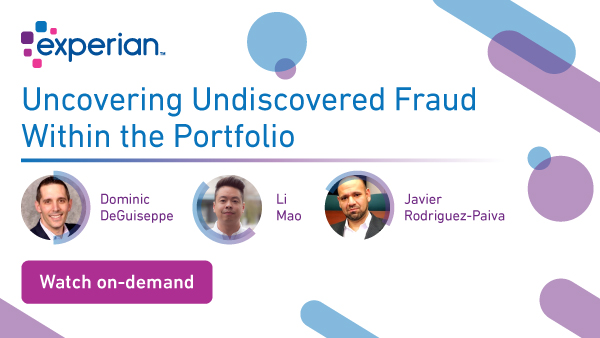
Experian hosted a commercial fraud trends webinar titled 'Uncovering Undiscovered Fraud Within The Portfolio'. During our session, key Experian experts Dominic DeGuiseppe, Javier Rodriguez-Paiva, and Li Mao, discussed the critical issue of commercial fraud within the financial industry and how it's often misclassified, leading to significant impacts on businesses. The speakers emphasized how businesses often underestimate their commercial fraud issues. Misclassification happens when business operational losses are erroneously categorized as credit losses. Businesses come to realize this when they delve deeper into the instances of credit misuse by fraudsters. Javier Rodriguez-Paiva argued that commercial fraud rates remain concerningly high, especially in small business lending and credit facilities, which are attractive magnets for criminals and credit abusers. This ongoing situation is worsened by lenders often lacking the specific capabilities to detect and manage fraud. In response to these challenges, Experian offers solutions aimed at rapid and early detection of different types of fraudulent activity. As Li Mao explained, the goal is to design solutions that allow businesses to identify risk quickly at the time of account opening, using advanced analytics and substantial data sources. Experian's solutions aim to ensure businesses can understand the different commercial fraud classifications and treat each case uniquely. By identifying the fraud type, be it first-party, third-party or synthetic ID fraud, appropriate responses can be triggered for each application. During the webinar, Li Mao introduced Experian's Multi-Point Verification solution, which verifies application information against trusted sources, allowing businesses to be confident of the identity of the business they are dealing with. This solution incorporates credit, fraud, and identity verification within a single tool. Javier Rodriguez-Paiva concluded by emphasizing the need for a more comprehensive risk management framework. Lenders could benefit from combining traditional credit scores with fraud-screening tools to provide a 360-degree view of a potential customer's risks. Such a multi-dimensional analysis can significantly improve fraud detection and prevention. The webinar highlighted Experian's commitment to supporting businesses in managing and mitigating prevalent commercial fraud challenges. While identity theft and credit abuse fraud are expected to increase, Experian's new strategies, enhanced verification tools, and advanced analytics solutions offer a promising shield against fraudulent activities. Click below to watch this webinar on-demand.
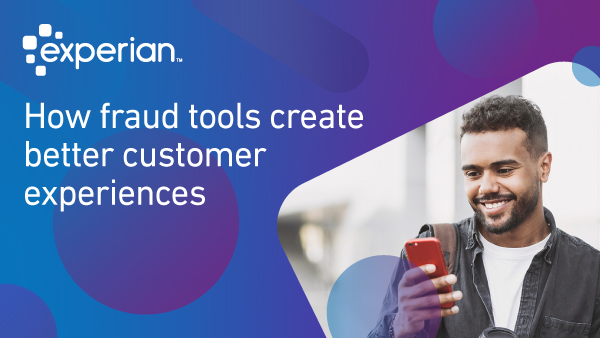
As the economy continues to recover, commercial service providers have a significant opportunity to expand their market share by growing their business and commercial portfolios through new customer acquisition. Compared to consumer relationships, which typically carry a more limited number of accounts, business customers offer the opportunity for a more expansive relationship, with the ability to onboard the customer into multiple accounts and products. A relationship with a business customer may start with a single checking account, and if the customer is pleased with the service and experience, that relationship may blossom with the customer’s adoption of additional products and services including telephone lines and devices, business credit cards, loans and lines of credit for business needs, software, and treasury management products, among many others. To gain more share of the wallet, commercial service providers must offer an excellent digital customer experience as the cornerstone of a successful customer relationship, as the market becomes more and more competitive. Business customers are quickly transitioning their operational processes to be digital-first, and they expect vendors and suppliers, across many industries especially financial institutions, to be a step ahead in offering digital account opening and support. How fraud tools help the customer experience Commercial service providers must continuously innovate their operations and account onboarding strategy to stay competitive and shut out cybercriminals. A robust fraud prevention strategy should help to reduce losses and operational costs. By prioritizing fraud tools that enable automation, commercial service providers can reduce costs by eliminating labor-intensive processes. The challenge for service providers becomes how to effectively manage that trade-off: creating a technology-enabled process that accurately disrupts fraud attempts while not inconveniencing and adding undue friction to legitimate customers. For example, fraud tools that activate during the onboarding phase can help service providers offer a better customer experience, allowing low-risk accounts to pass through with minimal friction while applying safeguards to slow down applicants in the danger zone for further review. Many commercial service providers are unaware of the amount of undiscovered fraud that lies within their customer portfolio. Undiscovered fraud is a subset of your approved customers who represent a risk of future fraud. These cases exist because many legacy fraud tools take a one-size-fits-all approach to screening for fraud. But these customers are at a higher risk for future fraud occurrence. Now, advanced fraud prevention improves the experience for the majority of customers by enabling a less intrusive application process, reducing friction within the customer experience, and increasing operational efficiency. Preventing fraud with an integrated framework of tools There are three major types of application fraud: First-Party Fraud —the perpetrator opens an account without an intent to repay the creditorThird-Party Fraud — the perpetrator opens an account under someone else’s identitySynthetic Fraud — the perpetrator uses stolen information and creates a fictitious identity with pieces of real information, in order to carry out fraud. Tailoring your approach to specific fraud makes for a better customer experience and bottom-line savings. However, identifying and remediating all types of fraud requires a cascade of tools, experts, and data sources. Experian’s commercial fraud suite can be customized within a commercial service provider’s operational workflows to address each form of fraud with the correct treatment. Experian’s tools are supported by the most robust consumer and business data available, in addition to new, third-party sources, giving commercial service providers the ability to gain efficiency through a single partnership, as opposed to manually integrating data from multiple disparate tools and sources. One way we have created efficiencies for commercial service providers is by blending consumer and business data through our next-generation business verification solution Multipoint Verification. It helps clients cross-reference application information with robust databases backed by blended bureau data and new, third-party data sources. With Multipoint Verification, commercial service providers can leverage practical intelligence gathered from signals that describe the validity of attributes like the applicant’s phone number, professional social media profiles, historical employment information; and business information like a business’ web domain, email addresses, mailing address, industry classification, corporate linkage, Tax ID, and much more. Once the business owners have been verified, providers can score their applicants with Experian’s First Party Fraud Score, a new-generation blended predictive scoring model designed to identify first-party fraud risk or the likelihood of a first payment default within the first 6 months of account opening and to identify credit bust-out scenarios. Growing business customer bases with fraud prevention tools Customer expectations of online applications have changed in recent years, and your lower-risk good customers can enjoy that lower friction experience while higher-risk applications get more scrutiny. Focusing on the customer experience in how you screen for fraud can be a great growth opportunity. By using a comprehensive suite of tools such as Experian’s Commercial Entity Fraud Solutions, which specifically addresses each fraud type and applies the right type of friction when needed, your firm can drive operational efficiency that reduces risk and cost. Learn more about Multipoint Verification
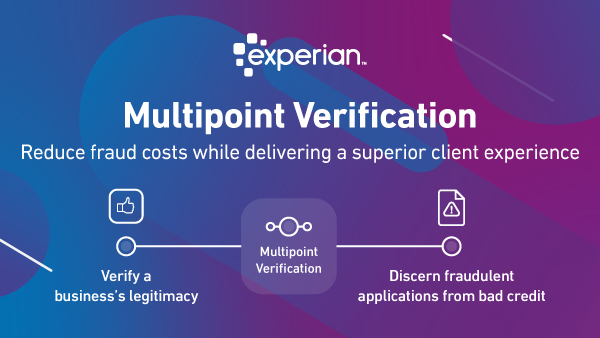
Experian is very excited to unleash game-changing commercial fraud detection capabilities with Multipoint Verification, a key component in our commercial fraud suite. Innovations in digital consumer experiences mean your commercial customers have new expectations. They want personalized, digital, secure faceless experiences, and fast decisions. But faster digital experiences without proper checks can often open the door to commercial fraud. Manual application reviews can slow things down, and cut into your bottom line. Experian can help you control costs and protect you from the high price of commercial fraud, and labor-intensive manual review processes. Multipoint Verification facilitates fraud detection at the point of application, so your lower-risk good customers can continue to enjoy a frictionless experience while you mitigate fraudulent applications. Introducing Experian Multipoint Verification Multipoint Verification helps you verify a business's legitimacy. In addition, it enables you to discern fraudulent applications from bad credit through comprehensive data sets. Single-sourced verification products can be limited in their capability and often prone to false positives. Multipoint Verification arms you with practical intelligence, so you can confirm the linkage between the applicant and claimed business, state filings, email issuance, or identify potential corporate linkage to other entities at the point of application. Experian is transforming the commercial fraud screening landscape, let’s start a conversation. Learn more about Experian Multipoint Verification
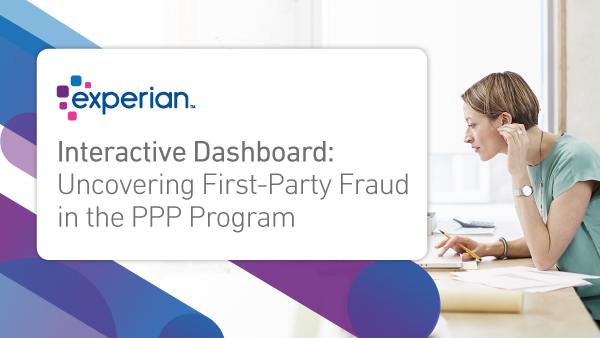
Experian dashboard of PPP program helps lenders mitigate future first-party fraud risk The last round of stimulus for the Paycheck Protection Program (PPP) ran out of funds this week. The $953 billion stimulus program, designed to help businesses, self-employed workers, sole proprietors, nonprofit organizations, and tribal businesses continue paying their workers during the COVID-19 pandemic. As a result of emergency conditions and immediate concern to serve businesses in need, lenders relaxed vetting restrictions on PPP loan applicants. Also, they rushed to digitalize services to accommodate the massive influx of new PPP loan applications. Relaxed restrictions, high demand, and time sensitivity surrounding PPP loans created potential entry points for first-party fraud, or fraud committed by known customers (individuals and entities). Lenders looking to cross-sell or up-selling PPP client's new loan products should first understand the amount of first-party fraud exposure in their PPP portfolio. Understanding potential fraud levels will help avoid unnecessary reputational risk related to the new population of PPP-related commercial clients. Experian's Commercial Data Sciences team wanted to give lenders the ability to understand the amount of first-party fraud in their PPP portfolio. To start the conversation on the scope of fraud in the PPP program, Experian evaluated the publicly available SBA PPP loan data for the first round of PPP loans; these were public-only loans originated without a private guarantor. We anonymized and scored this dataset with Experian's newly developed Commercial First-party Fraud Score. The score measures the risk probability with a machine-learned algorithm to predict first-payment or early-stage defaults within seven months from account opening. Revealing elevated levels of fraud Scoring this public data revealed segments in some PPP lender portfolios with an elevated risk of first-party fraud, in some cases 10x to 20x riskier than the baseline. First-party fraud is a type of fraud where customers intentionally default on payments, either first-time payment or a payment sometime down the line. By examining the distribution of a lender's accounts as they fall within the score bands for first-party fraud risk, lenders can understand a projected dollar amount of balances to be charged off. They can also grasp the estimated dollar amount of losses per account or loss-prevention potential for the account if it had been reviewed (assuming reviewers catch 100% of fraud.) When dealing with first-party fraud, a lender's existing identity fraud prevention tools are typically unable to detect potential fraud. If underwriting relies on a point-in-time assessment, the lender would be blind to applicants' behaviors that may change after loan origination and fraud insights gained from evaluating accounts from other lenders. As a result, first-party fraud would be hidden in charge-offs, preventing lenders from identifying it for future analysis before marketing to their PPP loan population. Experian's Commercial First-Party Fraud Score helps lenders understand the first-party fraud risk of their PPP portfolio to limit future exposure for their new PPP population. Data visualization View the PPP dataset displayed in our tableau data visualization. Suppose you are a lender and concerned about fraudulent PPP loans in your portfolio. In that case, Experian can provide you with a Lender ID so you can assess risk levels revealed by the Experian Commercial First-party Fraud Score. View PPP Dashboard
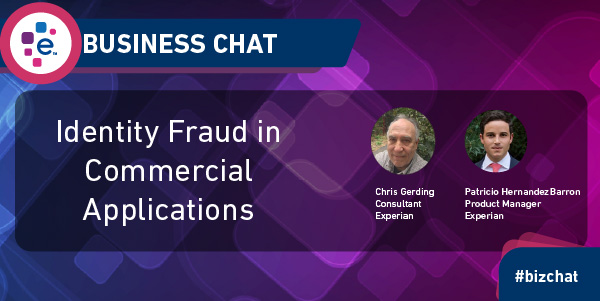
Identity Fraud in Commercial Applications We recently sat down with two Experian experts to talk about commercial fraud trends and gain an understanding of why commercial fraud is on the rise, and what organizations can do to combat the problem while at the same time grant credit to growing businesses. What follows is a lightly edited transcript of our interview. Watch Our Business Chat Interview Subscribe To Our YouTube Channel What follows is a lightly edited transcript of our conversation. [Gary]: Hello and welcome to Business Chat I'm Gary Stockton with Experian Business Information Services, and today we're going to talk about Commercial Entity Fraud with two of our experts. [Gary]: Patricio HernandezBarron is a Product Marketing Manager here in Business Information Services, and he covers the commercial fraud space. Chris Gerding is a Consultant and he also focuses on commercial fraud. Welcome to business chat guys. [Gary]: The two of you recently collaborated on a perspective paper called Identity Fraud in Commercial Applications, and the piece asserts that there's been rapid growth in commercial fraud in the past few years. So, Patricio, if I could ask you, how are B2B companies affected compared to business to consumer companies in battling fraud? [Patricio]: Let me start by saying that both commercial and consumer or B2B or B2C companies are both affected by fraud, whether this is first-party fraud, third-party fraud, or synthetic fraud. They're both affected. Now, where it becomes different is the type of solutions that are out there in the market for them to solve it. There have been a lot more advancements on the consumer front, and it makes sense, consumer trends move a lot quicker compared to the commercial side of things. [Patricio]: But, in 2020, it's been considerably harder for fraudsters to get through the filters on the consumer side. So (fraudsters) being smart, they've started to focus on the commercial lines of business, which they already know that they're a little behind in terms of the sophistication of consumer lines. So, it's opened a potential opportunity gap for fraudsters to get through and businesses can't wait any longer. They need to raise their game and make that parity between consumer and commercial lines of business in terms of the fraud mitigation strategies. [Gary]: What's the scale and size of the problem of commercial fraud? [Patricio]: It's a big problem. A recent report published by the Association of Certified Fraud Examiners stated that 5% of business revenue was lost to fraud. 55% of respondents we asked said that as of 2019 fraud attacks have increased. So there's a clear problem right now, whether these businesses are recognizing these losses as bad credit or as fraud losses, that is the first thing that they need to focus on. [Patricio]: And the thing is, many of our customers would tell us, “we don't have a fraud problem”, but it was because they weren't recognizing and discerning between credit losses and fraud attacks. So that is the first thing that they need to focus on, start differentiating and categorizing those losses differently so they can start looking into it. The other thing that I'm sharing around this topic is many times businesses tighten their credit decisioning in hopes to reduce those losses. But that was counter-intuitive because they were making it harder for potentially genuine customers to make it through the application process. And yes, the fraudsters were passing this filter or no filters but were passing this credit scoring with no problem because they knew the data that would be required, and there were again, no fraud filters in place to stop them. [Gary]: So, Chris, can you talk about some typical scenarios in which businesses, especially small businesses are typically attacked by fraudsters? [Chris]: Small businesses and any business have a lot in common with consumers. There are modes and fraud scenarios where both are vulnerable. And businesses typically have both financial assets and competitive information at risk. They could be phished; they could be socially engineered, and this is exactly what we read on a consumer basis when we hear about how to avoid fraud. [Chris]: Second, leakage of sensitive information over the other channels can result in direct fraud, like account numbers, pins, obvious targets. However, they need to misrepresent their identity in many cases. And the contact information such as the firm name, the address, the owners, or officer's personal details, this kind of information when compromised leads to potentially bigger and harder to detect, harder to stop fraud schemes. Consumers can be defrauded like businesses, but these are the more big-ticket business-specific categories that you're seeing here on this slide. [Chris]: These three represent a good slice of the many ways businesses are defrauded and small businesses with some vulnerabilities associated with not having millions and millions to spend on fraud defenses would be vulnerable to some extent. The equipment financing and leasing firms can be defrauded either out of funds or especially vehicles and heavy equipment. We see cases not many in the news, but you do hear about these, where, if you pass the finance companies fraud screen, fraudsters can successfully apply for financing and potentially come away with, I mean, a car would be on the low end of this, construction equipment for or combined for major capital items. Then they disappear. [Chris]: Number two, fake invoices are a very easy way comparably to collect perhaps smaller amounts, but these can be forged documents sent in under the wire and they are paid sometimes by very busy accounts payable people with very few defenses in place, and something that we're going to talk about later, fraud payments figure very largely in commercial fraud. Payments that are not backed up by good funds and intentionally sent it to cover a balance on an account are a very big part of commercial fraud. Fraudsters may actually make multiple payments, playing the timing game so they keep the account and the account balance alive and growing, or the credit balance on the account so that they can perhaps get more from the fraudulent credit relationship that they've built than the intended credit line by this timing and submission of payments. They can do this for several industries. They can do this for all different kinds of payment items themselves. They could be done with forged paper checks, electronic payments, and sometimes counterfeit payments themselves. [Gary]: Patricio, turning to you, would profit be impacted by implementing fraud prevention filters? I would imagine that would hinder some profitable growth? [Patricio]: It's a tricky one because, you know, there's this big misconception that by applying fraud filters, that's going to affect your profit or affect your number of applications going through. And it is true to an extent by applying fraud filters, you will see fewer applications going through. But affecting your profit, it's the complete opposite. It's actually going to reduce the losses that you'll be incurring, and I briefly touched upon this in your previous question, but what many companies do when they're not able to differentiate between credit losses and fraud losses, they tighten their decisioning in their credit applications. Those potentially good customers don't make it through, but fraudsters make it through with no problem at all. Because the decisioning system that they have for credit purposes does not do much for mitigating the fraudsters. [Patricio]: Many times, these companies don't invest in fraud solutions until they've gotten this big hit from a fraud attack, at that point, it's already too late. So, I would say that the best thing to do to help your profit is to be proactive because fraud can affect your profit if you get impacted. If you're proactive about it, you can protect or reduce those fraud losses that you're currently seeing as overall fraud, or losses that could be a fraud and not just credit losses. [Gary]: What's the number one step that commercial business, especially a small business can take to combat this wave of commercial fraud? [Chris]: Awareness must be built into the culture and it must be built into the solution and how the firm deals with the solution because there's no way to solve the fraud problem with a turnkey black box, turn it on, and forget it, we don't have that. And we may not have that for many, many years. [Gary]: Can you tell me more about the first payment defaults and how lenders are addressing that problem? [Chris]: We spoke a bit about payments in general as a fraud channel, but this is a particularly aggressive form of fraud or credit abuse. And it happens when the borrowing party just never ever makes one payment on the account. They may utilize the entire credit line and they just don't ever pay. So when the first payment is in default, there's a high suspicion that this could be a fraudster. There's a little ambiguity, as I said, but the credit and the fraud dimensions are rather close. They're rather parallel, in terms of how they are dealt with. [Chris]: What are we doing about accounts that are very brazen and do this on the first payment due? We evaluate the risk at the time of enrollment. This is very important, we don't know, who's not going to pay us the first time. So we need a tool that evaluates, in this case, we offer a score, a commercial first payment default score, which is very high performance and very friendly to the combined mix of consumer and commercial data that a firm might have. Second, it pays to look at the risk of the entire portfolio for first payment default periodically. Again, is done with a score, it could be the same score I mentioned. In the third category, if it's necessary, the host firm may wish to use scoring the individual payment item, the check, the online payment as a fraud evaluation, which is done by a different set of scores to manually perform systemic checks. [Gary]: So Patricio what are some of the most common misunderstandings in fraud prevention products? [Patricio]: Fraud filters will affect the number of applications that you are able to approve. As we mentioned before, it does affect the number of applications that you'll see come through, but it will help increase your profit by incurring fewer losses. Again, fewer fraudsters make it through equals fewer losses coming into your system. The second one would be that most fraud can be solved by verifying the identity of the user. And sure, it's because third-party fraud solutions are very popular, but that's not going to help you with all types of fraud. That's why you do need a layered approach for mitigating what's going to come through the door because, at the end of the day, you don't know what type of fraud you're going to be seeing. [Patricio]: By implementing a solution that will verify the identity of the user, that's not going to help you fight all types of fraud. In fact, stand-alone, you will do very little to mitigate first-party fraud and likewise with synthetic fraud. So again, if the way to solve fraud is not with a one size fits all approach, it's layered whether you have the resources and the capacity to implement a geolocation verification, or verify the validity of the data or verify the identity of the business owner. These are all things that are just going to prevent and help you weed out the different types of application fraud that you could see (coming) through the door. [Gary]: Chris, what can small businesses do to engage with Experian and minimize their fraud exposure? [Chris]: We love to talk, especially to small businesses on a very global scale in terms of their business operations and where it is that we might be able to help them. They may come to us with a great deal of awareness that they have a fraud problem and they kind of know where it is, but they look for a specific solution. Other small businesses may come to us with general concern. And in those, and in other cases, we are happy to sit down with them and do what I would call a free consultation and look at their information and make some suggestions. [Chris]: What we do is we offer solutions, but we like to add to that the knowledge of the particular client's situation, so that they become wiser and they become enabled by the kind of services that we provide, and they become enabled by the information we can bring to them upfront so they can make a wise consumer solution as it were. [Gary]: Well fraud in the payment protection program or the PPP program is all over the news. What do you make of that? Are these fraudulent applications affecting lenders, even though the losses would be absorbed by the government? [Patricio]: While many of these lenders know and think that the loss of the potential losses would be absorbed by the government, the reality is that it's uncovering many gaps for these lenders. First, we understand there's a greater volume of applications going through their systems. So what many of these lenders have done is either turn off, completely turn off their fraud mitigation systems, or they've reduced the amount of vetting that they do, because they're not too worried because they know that the government is going to absorb those losses because of the volume of applications that they see. Now, the problem with that is that if they completely turned off the system, now they have potential fraudsters within their portfolio, or on the other hand, if they lessened the amount of filtering that they do, and yet still some fraudsters make it through, it's going to be very hard to weed out those fraudsters down the line. It's just putting more risk to your overall portfolio, and, people, once they're in there, they've already uncovered some gaps in your underwriting process. So again, just down the line is going to be very hard to weed out these fraudsters that made it through your portfolio, [Gary]: Chris, anything to add? [Chris]: That was a good summary. I would add only that the other side of the coin is when you put many, many tens of millions of good Government money into the hands of fraudsters, you're sort of inflating the entire credit system. You're allowing bad people to get what appears to be credit for good loans until they're discovered. Many of these will probably not be discovered. So you're kind of adding bads to the system and calling them goods. And that's never good for all of us. [Gary]: Well, this has been very helpful guys. I want to say thank you very much for coming on Business Chat and sharing your insights. Related Posts
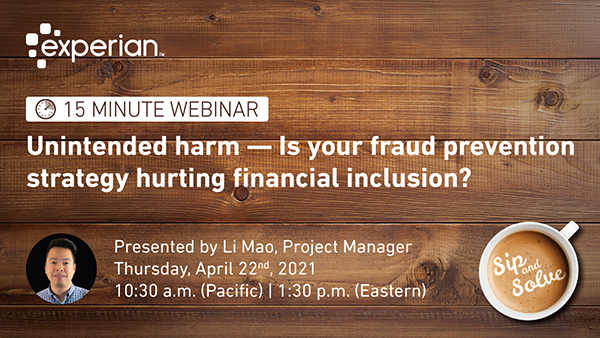
Commercial fraud prevention causing unintended harm We often hear anecdotes from our clients about a recent string of bad debt, soliciting advice on how best to prevent future losses. Typically, with an increase in credit loss, maybe your natural reaction is to tighten up on credit evaluation criteria to screen out look-alikes? In so doing, you can also impact the ability to grow, and in the process, exclude good customers by retooling your lending criteria, weeding out fraud. In our upcoming 15-minute Sip and Solve webinar, we'll explore whether tightening your credit score cards could unintentionally cause dozens, hundreds, thousands of small businesses not to receive the credit they deserve. Date: Thursday, April 22nd, 2021 Time: 10:30 a.m. (Pacific) 1:3- p.m. (Eastern) Session highlights Find out why misclassifying losses due to fraud as credit write-offs could impact your ability to grow your business. Learn more about delinquent small business credit behaviors versus small businesses looking to commit fraud. Discover how you can assess whether past charge-offs were actually due to fraud. Save my seat

In 2019, 3 in 5 businesses noticed an increase in fraud over a 12-month period. Today, in the face of COVID-19 and the economic downturn, it’s safe to assume that these numbers have increased. In this Sip and Solve session, Experian's commercial fraud expert, Li Mao, discusses the process of introducing friction into credit processes to discourage fraudsters. He'll also talk about: The most common types of fraud you can expect during COVID-19 What first party fraud is and how you can detect it Tips on how you can combat first party fraud and more WATCH RECORDING
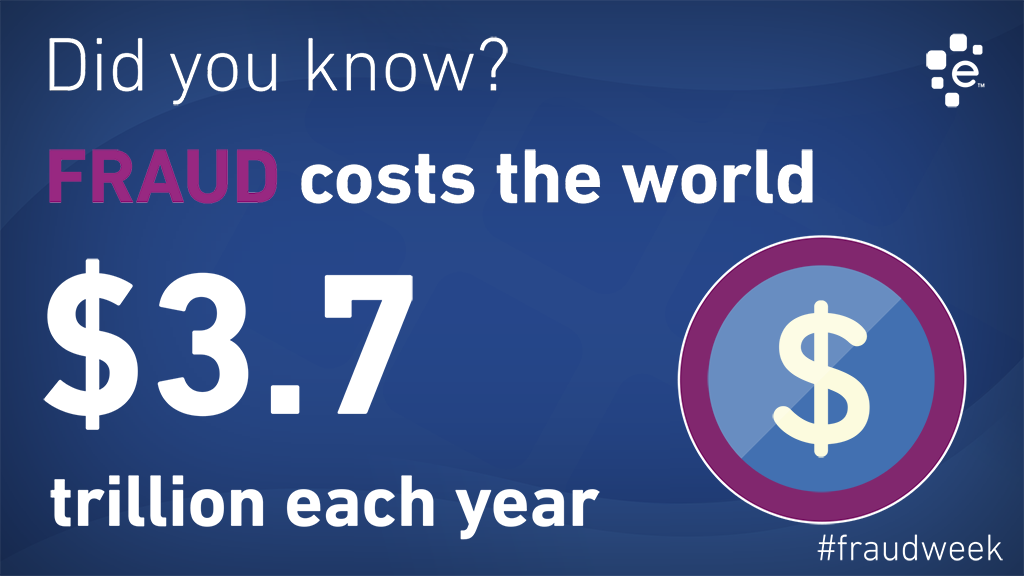
It's International Fraud Awareness Week and Experian would like you to know how big the problem is for businesses. Here are some sobering facts, did you know? Every year 3.7 trillion dollars is lost to fraud? it would take the average person to spend 130 million dollars per day in their lifespan to cover that amount. Fifty four percent of businesses are only "somewhat confident" in their ability to detect fraudulent activity. And that's compared to only 40 percent who are very confident. 52 percent of businesses have chosen to prioritize the user experience over detecting and mitigating fraud. Organizations worldwide lose an estimated 5 percent of their annual revenues to fraud, and an incident of fraud costs a company a median loss of $145,000. .
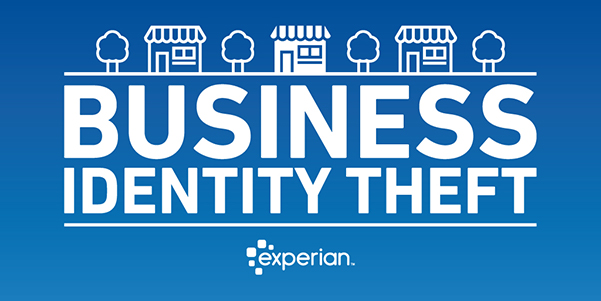
You likely go to great lengths to protect your own identity from fraud and theft. But are you actively protecting your business’s identity as well? Even more importantly, do you make sure you are not doing business with fraudulent companies that have been victims of identity theft themselves? In many ways it’s harder to protect your business identity than your consumer identity. Information about most businesses is publicly available – and as easy to find as a simple Google search. Because businesses self-report much of their own information, it’s easy for a thief to add their name or address to a company. To make it even easier, many businesses do not protect their EIN the same way as they secure their SSN – which they should. At first glance, you may think having your personal identity stolen to be more damaging than a business identity. But in fact, the opposite is often true. Business owners often personally guarantee loans, even if the loan turns out to be fraudulent. And then if a business must close its doors due to the losses from the theft, the business owner now has no income and must repay the loan. How Business Identity Theft Happens Some thieves steal business identities by purchasing a shell corporation. Others take over a company’s data. But regardless of how the left happens, the criminals often go to great lengths to mirror the company. Some even rent space in the same building as the original company and using the same suppliers. At this point, the fraudulent company can start physically intercepting deliveries as well as applying for loans and credit, posing as the original company. Criminals start with one piece of information that is real, such as an address or EIN number. And then start operating as if they are the company and changing the data. Criminals often wait patiently while building up their reputation and credit history, then “bust out” with a large amount of fraudulent activity in a short period of time, and then walk away before they are discovered. Protect Your Own Business Identity Business owners must constantly monitor their business information to spot red flags that criminals have taken over. The earlier the theft is discovered, the less damage that occurs. Here are three things to look for to spot business identity theft of your own business: Look for new addresses added. Check your credit reports and government filings to verify the address. One of the first signs of theft is often a new address added to your business information. Verify that new registered owners have not been added. Thieves will often add a new principal — CEO, owner or partner — to the list of owners. The criminals can then conduct business as if they are an owner. Check business accounts daily. Use online banking — which also reduces the risk of stolen paper statements — to look for any transactions that you or your employees did not make. Consider setting mobile alerts for suspicious transactions to spot issues even faster. Verify Your Customers are Not Fraudulent Companies Before doing business with a company, do a business verification by making sure the company is who they say they are and not a and not a fraudulent company. Since verifications cost time and money, take each customer on a case-by-case basis regarding how deep to dig. If a customer orders $100,000 worth of computer equipment, you should do a more thorough investigation than for a business ordering a single $500 laptop. However, anytime you are extending a line of credit to a company, you should deep dive into a companies' history and data because you are taking on a high risk. Stacking loans is a common tactic – meaning companies take loans from multiple companies at the same time. Because many companies often verify customers by looking at their relationship with the business, they are verifying in a vacuum instead of seeing the entire picture. By using databases and tools that provide a holistic view of all activity, it becomes much easier to find the fraud. Here are five things to look for when verifying a company: Verify the EIN number. One scheme is to use a different EIN number and have all other pieces of information the same. Make sure the company you are doing business with is using the same EIN number as the legitimate company. Consider the number of open lines of credit. Because fraudulent companies often open multiple lines of credit at the same time, determine the current amount of open credit. Multiple large lines opened around the same time can be a red flag. Look at the number of sub-companies and activity between the companies. Criminals often set up a fraud ring by operating as sub companies underneath a single company. The “companies” then loan money to each other to boost credit scores and credibility. Note for periods of dormancy. When a business identity is first stolen, the criminals set up the company and then go dormant to build credibility through age. The company will then “bust out” by making a lot of transactions very quickly with multiple companies. Look for additional addresses. Check to see if the address you have been given is the same as the company’s headquarters. Multiple similar addresses can be a red flag. As business identity theft continues to rise, you must keep your eyes open for signs of theft — both with customers and your own business. A single credit check or google search simply isn’t enough. You owe it to your business and your future.
